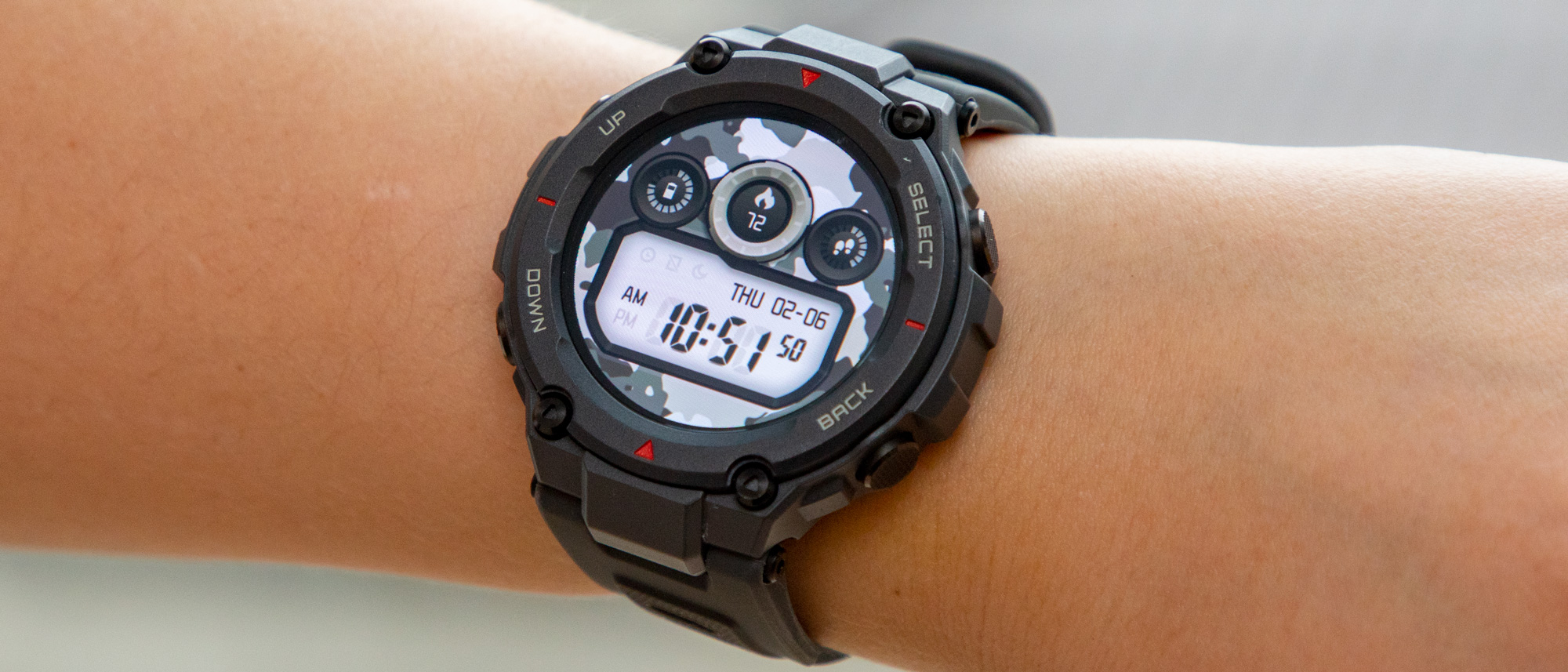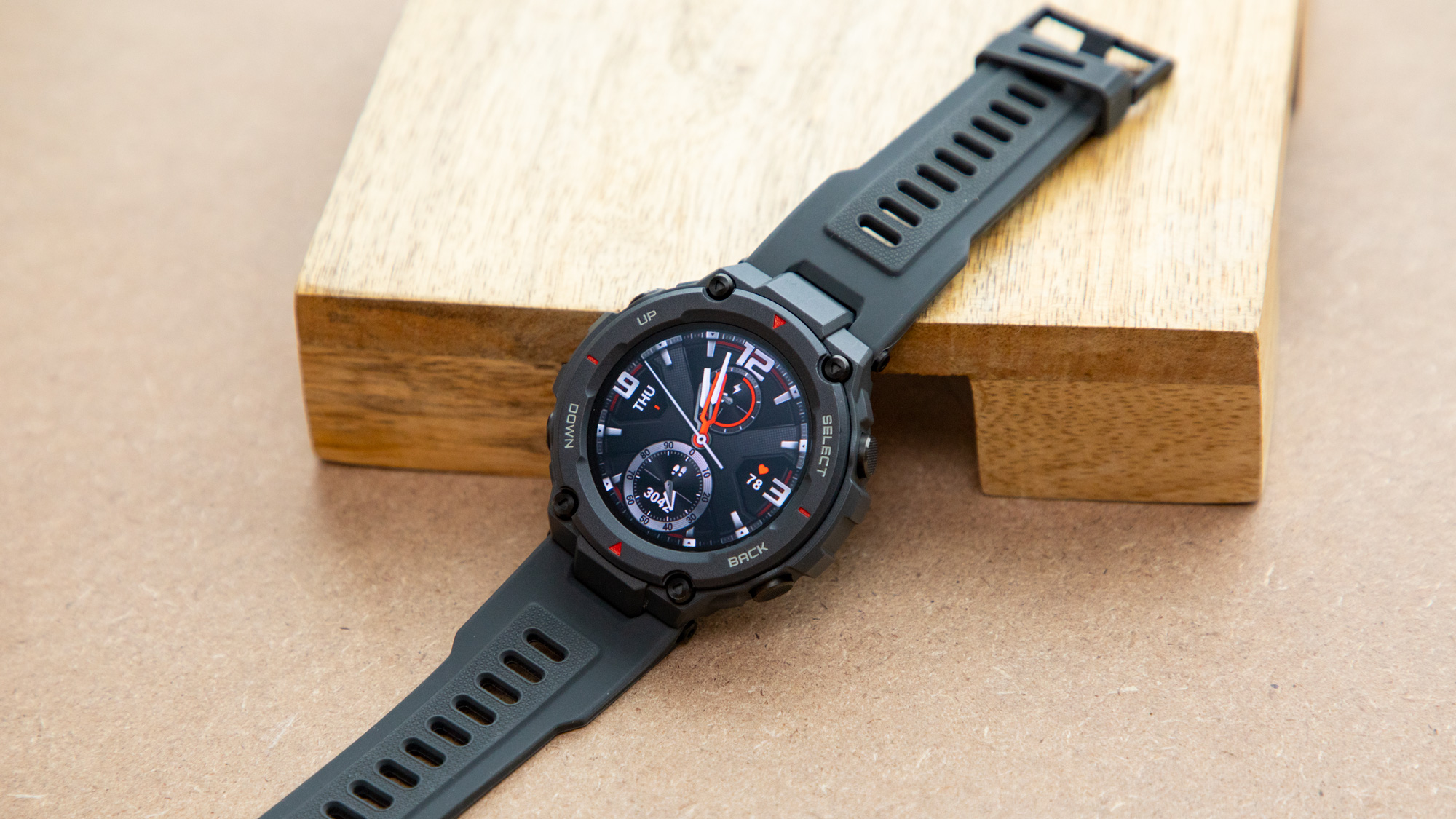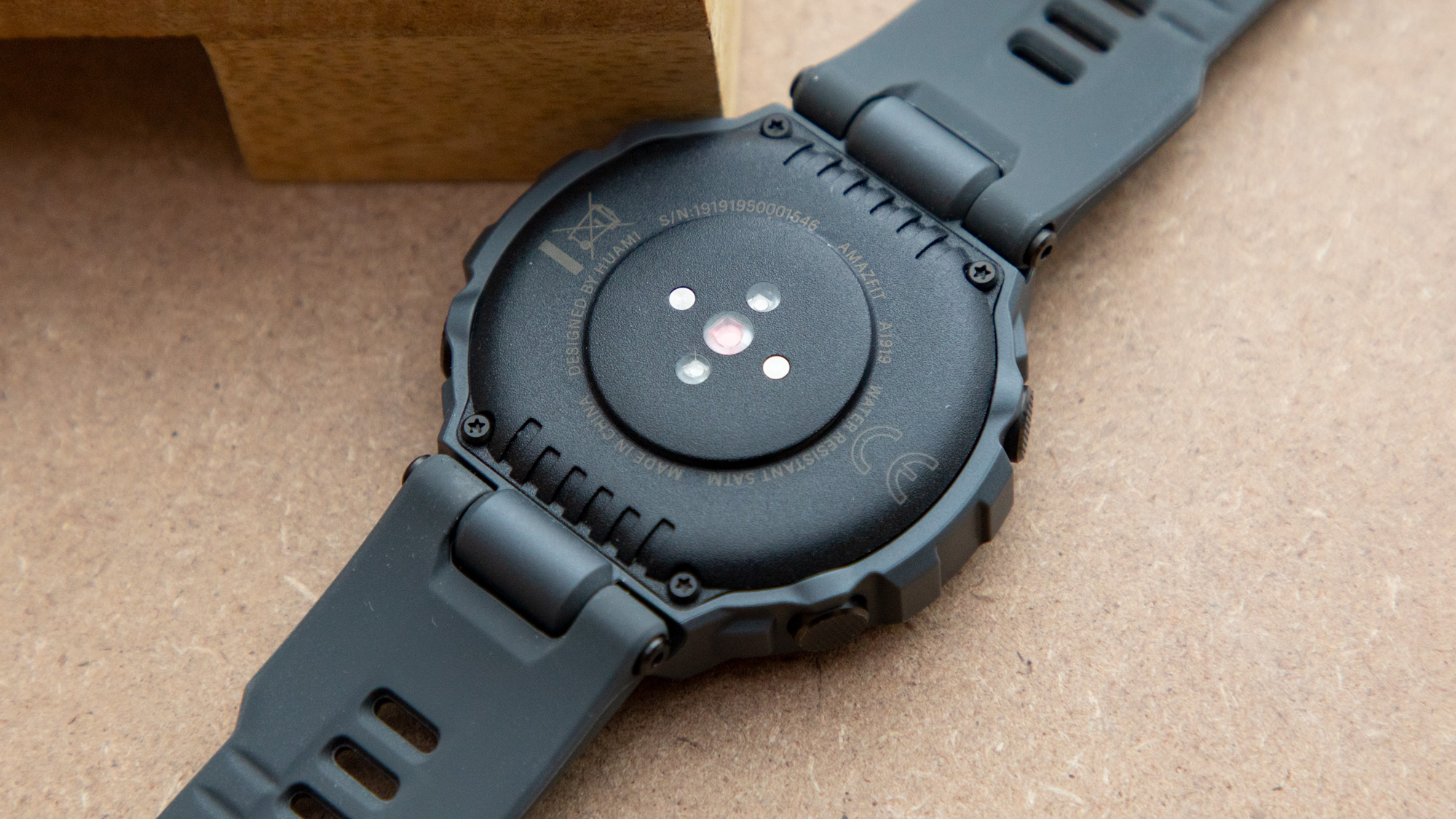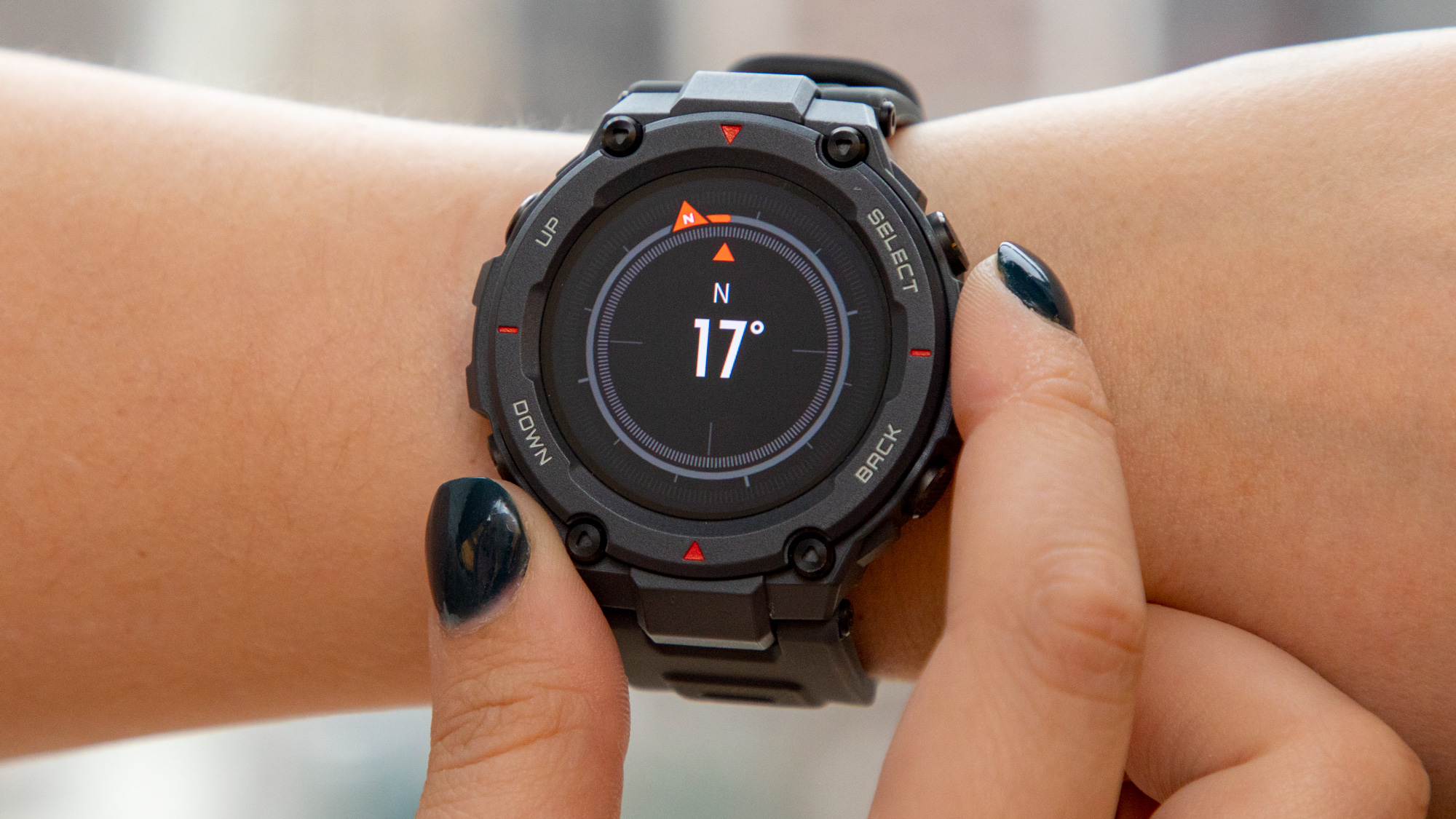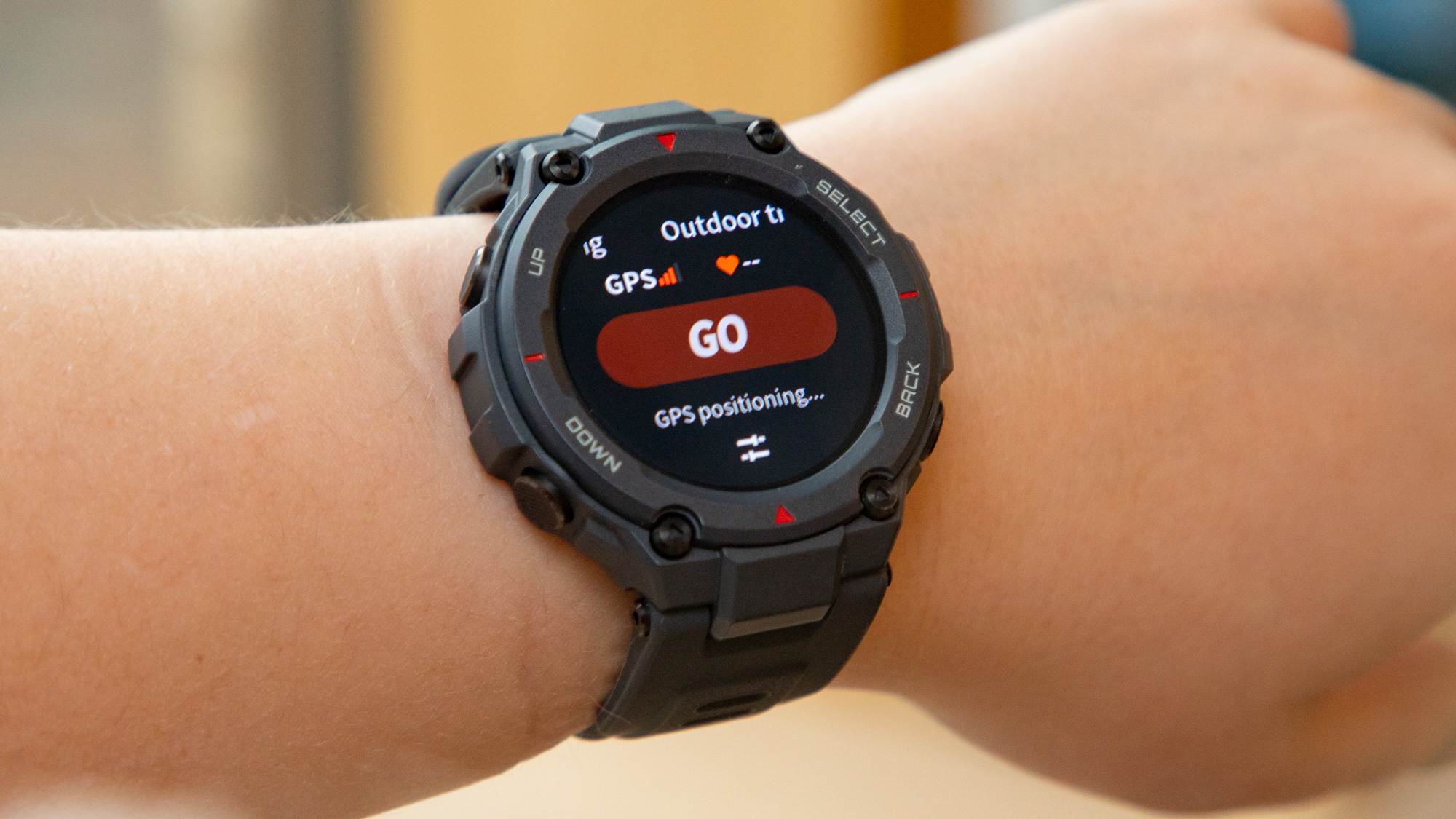Tom's Guide Verdict
The rugged Amazfit T-Rex is an outdoor GPS sports watch with impressive battery life and costs less than $150. But its bulky design and limited smarts might not be for everyone.
Pros
- +
Affordable for a GPS watch
- +
Rugged design
- +
Impressive battery life
Cons
- -
Outdated watch face options
- -
Notifications are frustrating
- -
Poor haptics
Why you can trust Tom's Guide
Water resistance: 50 meters
GPS: Yes
Heart rate sensor: Yes
Display: 1.3 inches
Smartphone notifications: Yes
Size: 4.4 x 3.3 x 1.3-inches
Weight: 2 ounces
Battery life: 20 days
Huami has made its name on low-cost wearables like the Amazfit Bip, one of the best smartwatches we’ve tested. Now, with the ultra-rugged Amazfit T-Rex, the company has turned its attention to GPS sports watches.
- Read our Amazfit GTS review
With a large display, on-board GPS, built-in compass and enough durability certifications to survive Jurassic Park, the Amazfit T-Rex looks to challenge Garmin, the megalodon in the room.
Like other devices on our best sports watch page, the T-Rex offers an impressive battery life, variety of sports modes and sleep tracking – all wrapped in its impenetrable shell. But as I discovered during my Amazfit T-Rex review, there were a few compromises made to get to its low price of $140.
Amazfit T-Rex review: Price and availability
The Amafit T-Rex comes in one size, and costs $139.99. We tested the Gun Grey model, although you’re able to choose from Rock Black, Khaki, Army Green and Camo Green versions, too.
You can buy the Amazfit T-Rex as of this writing from retailers such as Amazon, Best Buy and B&H Photo, or directly from Huami on Amazfit’s website.
Amazfit T-Rex review: Design and comfort
When I unboxed the Amazfit T-Rex, I thought Huami sent me a Casio G-Shock by accident. The thick case measures 44-millimeters, and the tough exterior is emphasized by metal screw heads, textured buttons and chunky guard pieces. Four labeled buttons surround the watch case: one for up, one for down, one for select, one for back.
The bezel has a raised bumper to protect the screen, which itself is covered in Gorilla Glass 3 and an anti-fingerprint coating. It makes the watch bulky, which some might like but I found absolutely infuriating when it would get caught on my sleeve. I couldn’t get the T-Rex to rest comfortably on my wrist either. Knowing this was probably a “me” problem, I had someone with a larger wrist try it out, and they were much less bothered. They even complimented its lightweight feel.
Get instant access to breaking news, the hottest reviews, great deals and helpful tips.
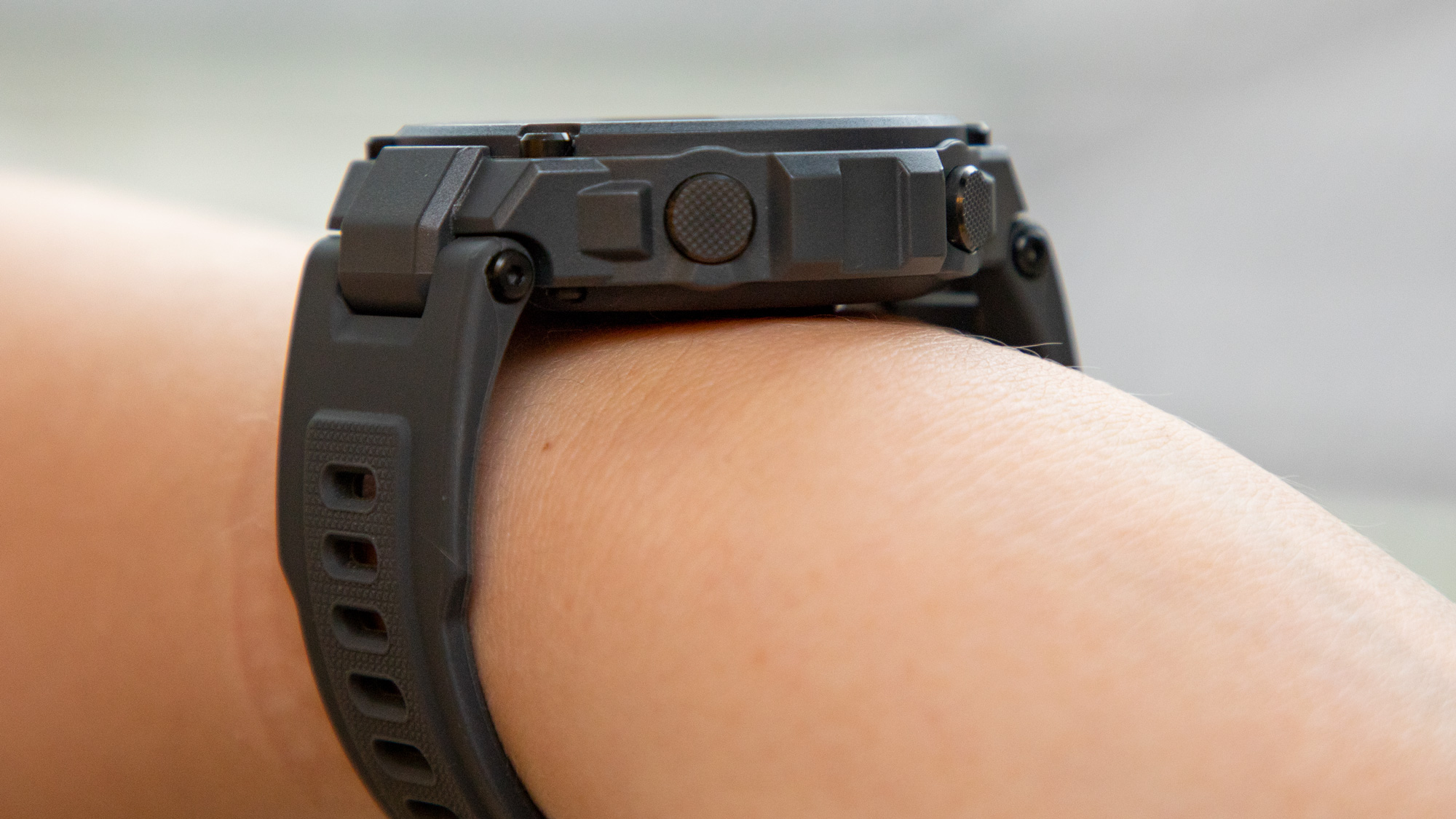
Huami is going for durability here, and it shows with the T-Rex’s hardware. The case has a Military Standard 810 rating for hostile environments, which means it can withstand temperatures ranging from 158 to -104 degrees Fahrenheit, and be submerged to 165 feet (5ATM). I couldn’t test these conditions in the mild New York climate, but it certainly handled my day-to-day life over the month I wore it, which involved a chaotic move, a few home improvement projects and a variety of outdoor activities.
As rugged as the casing feels, I’m a little less confident in the band’s quality. The plastic clasp seems like it could snap, while the silicone straps feel like they could stretch out over time. Although we haven’t reviewed it yet, the $199 Garmin Instinct touts identical durability certificates and more rigid bands. Luckily the straps are interchangeable, in the chance they need to be replaced.
Amazfit T-Rex review: Display and interface
The Amazfit T-Rex’s 1.3-inch AMOLED touchscreen screen is colorful and bright enough to be seen in direct sunlight. It makes the watch look more expensive than it is, and shines compared to the Instinct’s black-and-white screen.
The T-Rex’s interface is uninspiring, but that’s not necessarily a bad thing. I’ve seen low-cost watches try to overcompensate with complicated layouts, but sometimes less is more. You can navigate by swiping the screen in any direction or by using the physical buttons. Launching the activity menu is more intuitive than opening the main one, but once you get there you can control your music, countdowns, alarms and reminders. You’ll also be able to see the compass, get the weather or ping your phone.
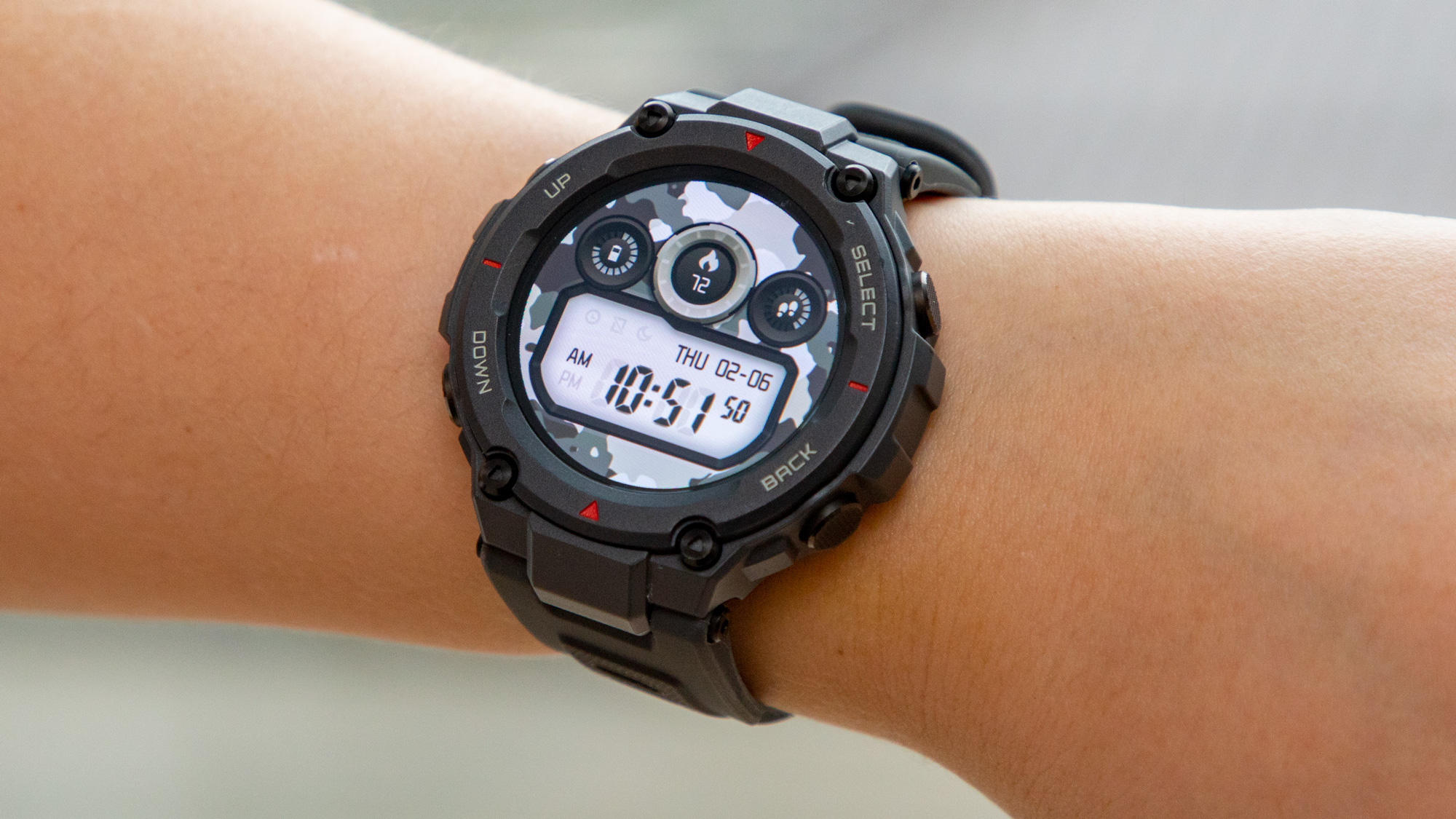
One of my least favorite things about the Amazfit T-Rex are its watch faces, and how they don’t align with the aesthetic of the outdoors. Perhaps I’m spoiled by my Apple Watch 5, but I didn't find a single one of the 30 available watch faces appealing. Most exude the tacky robotic vibe of early-2000s tech, none are customizable and only a few offer useful data like the weather. I think the type of person this watch is for deserves to have more information at a glance.
Amazfit T-Rex review: GPS, fitness features and sleep tracking
While the majority of the best running watches are aimed at true runners, some, like the Amazfit T-Rex, cater to the ultimate outdoors person, too. With GPS and compass capabilities, hikers and rock climbers shouldn’t lose their way if this watch is their guide. I’m no mountaineer, but when I traversed a nearby nature preserve, I found the T-Rex’s location data accurate. It knew precisely where I was, and pointed me in the right direction when I wanted to get back to my car. The GPS on my wrist tagged my route so I could backtrack if I got lost, although it would be nice if I could’ve downloaded my course ahead of time like I can using the Garmin Explore app on the Instinct.
In addition to outdoor walking, cycling, swimming, trail running, skiing and trekking, indoor treadmill, cycling, elliptical trainer and catch-all ‘exercise’ sport modes are available to choose from. No matter which you choose, you’re able to see your workout duration, distance and speed. The altitude meter will track your elevation gains, too. You can see these metrics in real-time on your wrist using the up and down buttons — the touchscreen locks when you initiate workouts to prevent accidental taps.
You can check in on your heart rate at any time, too. In fact, the T-Rex offers continuous optical heart rate sensing, and will even issue a rapid heart rate warning if it senses an unexpected pace that might be harmful to your health. This will only happen when you’re not working out, though.
When it’s time to get some shut eye, the watch tracks your sleep cycle to clue you into the quality of your snooze. It will assign a sleep score and provide a sleep quality analysis report. I’m not sold on sleep tracking technology as I often find it inaccurate, but when the Amazfit T-Rex says I sleep for 6 hours and 39 minutes on average I believe it. In my Garmin Vivomove Luxe review, for comparison, the watch told me I got close to 9 hours of sleep on nights I know I spent most of scrolling Twitter.
Amazfit T-Rex review: Amazfit app and third party-app compatibility
All of the Amazfit T-Rex’s fitness sensors provide useful metrics, but you’ll want to reference the Amazfit app (available for Android and iOS) to get a full picture of your health. It stores data on everything from your stride length and calories burned to your training loads and weight. You can manually input your body measurements if you’re looking to track fitness goals as well.
That said, the app can be confusing to navigate at first and doesn’t provide much context on your metrics, like what they mean or whether you should try to change them. For example, it told me my current sleep average might not be good for my health, but doesn’t offer suggestions for getting more rest. I appreciated being able to merge certain data with the Apple Health app, and often ceded to checking it over the Amazfit app for sleep and step information.
The T-Rex is also compatible with the running app Strava, so you can sync your metrics to keep up with activity challenges among your friends.
Amazfit T-Rex review: Music and notifications
There’s no on-board storage on the T-Rex, meaning it can’t hold music or offer offline Spotify support, so don’t count on being able to ditch your phone on hikes unless you’re okay with using nature as your soundtrack.
Even then, you might need to keep your phone in arm’s reach if you’re interested in staying connected. Like many fitness trackers the T-Rex doesn't let you respond to notification. You can only see the a preview, and will have to reach for your phone to read the entire message or answer.
It doesn’t help that the haptic vibrations feel pretty terrible, especially when I’m used to those of my daily driver, the Apple Watch. You can create custom vibration patterns for different notification categories within the Amazfit app, if you’d like to know if you’re getting a call versus a text. But I would suggest disabling notifications entirely, if your routine permits. You can check your alerts on your phone when you get to the top of the mountain — the reception is probably better up there anyway.
Amazfit T-Rex review: Battery life
Like the Amazfit Bip, the Amazfit T-Rex’s selling point is its battery life. Amazfit said the T-Rex should last 20 days on a single change, but that’s a modest estimate. In our testing it lasted closer to 30 days with limited GPS usage.
The battery seeped faster when we enabled GPS for late spring hikes, zapping about 10% per hour, meaning you should get about 10 hours of juice with continuous location tracking. That’s still impressive by category standards.
With a Garmin model like the Instinct, you can adjust the GPS to ping satellites at a slower rate to save battery. In smartwatch mode, the Instinct should last up to 14 days; with GPS turned on, battery life is 16 hours, but you can extend that to up to 40 hours in Garmin’s UltraTrac mode that periodically turns off GPS to save battery power.
If you’re ever unsure how much longer you can expect your T-Rex to last, you can view how many estimated hours you have left on the activity menu. There’s also a power saving mode for when you’re in a pinch.
Amazfit T-Rex review: Verdict
I’m hesitant to call the Amazfit T-Rex a smartwatch, even if that’s how Huami markets it. The interface feels sparse, the notification system could use work and the watch faces are stuck in 2003. But as a military-certified sports watch with all the sensors you could want, the T-Rex is a beast to be reckoned with. At $140, it’s less than half the price of the Garmin Instinct, making it an affordable alternative and one of the best cheap smartwatches right now.
The bright display and stamina of the Amazfit T-Rex make it a solid, but not spectacular, choice for the all-day adventurers on a budget, while the name makes it a no brainer for archaeologists.

Kate Kozuch is the managing editor of social and video at Tom’s Guide. She writes about smartwatches, TVs, audio devices, and some cooking appliances, too. Kate appears on Fox News to talk tech trends and runs the Tom's Guide TikTok account, which you should be following if you don't already. When she’s not filming tech videos, you can find her taking up a new sport, mastering the NYT Crossword or channeling her inner celebrity chef.
